Cromford - Village Centre
w/e 29 May 2016
All of this week's pictures were
taken with a Kodak DX6490
We took a ride out towards Matlock one afternoon
and pulled up in the village of Cromford. Previous visits have
seen us climb Scarthin Rock from the Arkwright Mill complex,
walk along the Cromford Canal to High Park Junction and Leawood
Pumphouse and also looked down on the village from Black Rocks.
On this latest visit we stopped in the village centre and did
the "touristy" bit by taking a short walk around the
Mill Pond.
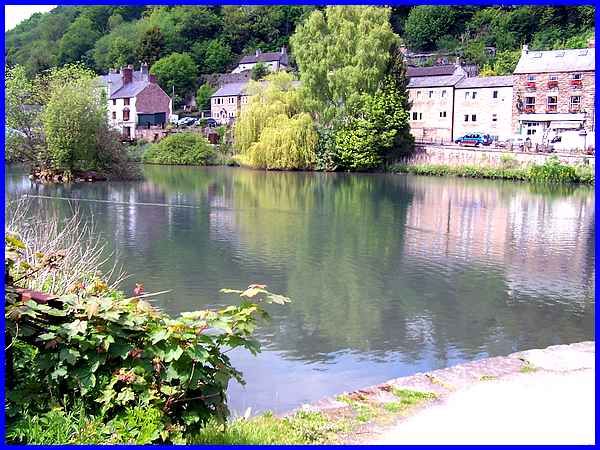
It was in 1771 that Sir Richard Arkwright started a cotton spinning
mill in Cromford which necessitated the construction of a number
of ponds to feed water to power the mills. Mill Pond in the village
centre was the last one from where the water passed through tunnels
in order to reach the mill on the other side of what is now the
main road through the Derwent Valley.
|
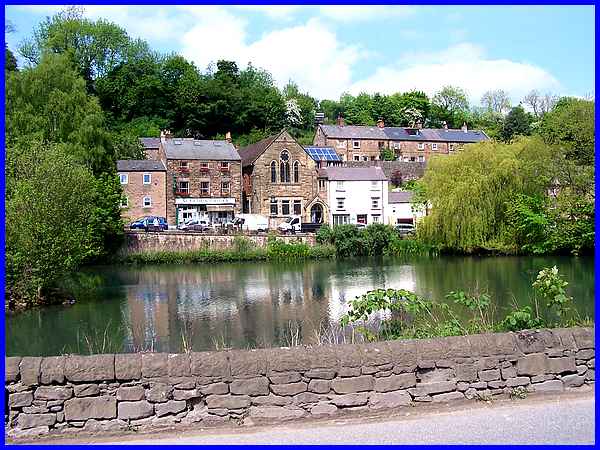
We walked along Water Lane by the side of the pond looking across
to the lane called Scarthin where the famous Scarthin bookshop
stands to the left of the former chapel that was built in 1912
as the Mount Tabor Chapel, replacing an older building.
|
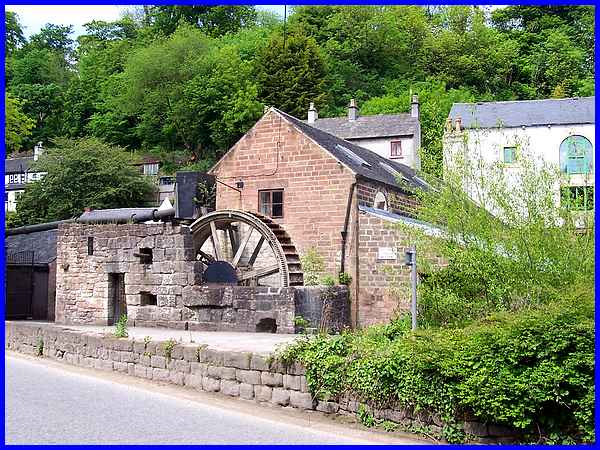
At the end of the pond is a waterwheel which dates from the middle
of the nineteenth century. Although it no longer drives any machinery
the overshot waterwheel is still in working order and can still
be turned occasionally.
|
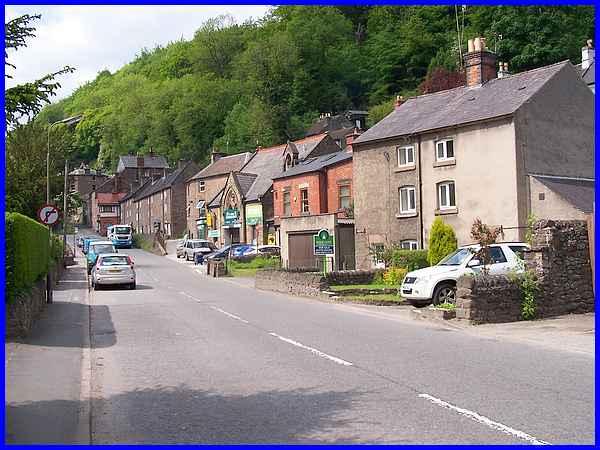
We continued along Water Lane which eventually leads to and becomes
Via Gellia Road, a route used not only by local residents and
tourist traffic but also by heavy vehicles transporting Derbyshire
stone from the nearby quarries. The road sign on the left indicates
"No right turn" for vehicles into a narrow lane but
as we were on foot that is precisely where we went.
|
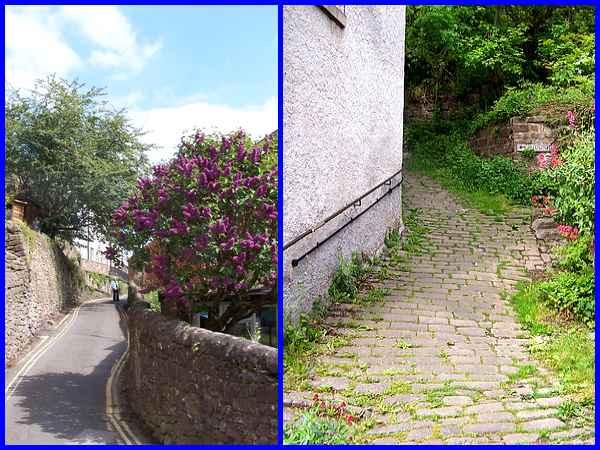
That narrow lane is actually Scarthin which rises up to run above
Cromford Mill Pond. A much steeper path leads off Scarthin up
the valley side and gives access to rows of small cottages and
the countryside above - but not today! Many of the cottages have
been demolished but there was a thriving community on the hillside
when Cromford was an important lead mining settlement.
|
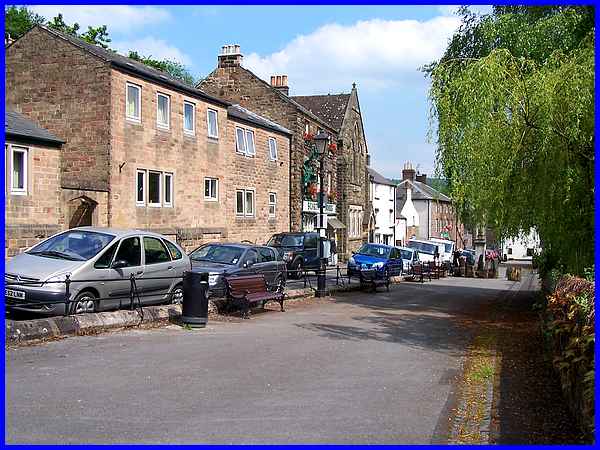
As Scarthin begins to descend again a wide area above Mill Pond
where the War Memorial stands is called The Promenade. The memorial
is to the twelve men from the village who gave their lives in
the First and Second World Wars and it is situated opposite the
former chapel and bookshop on the left of this picture.
|
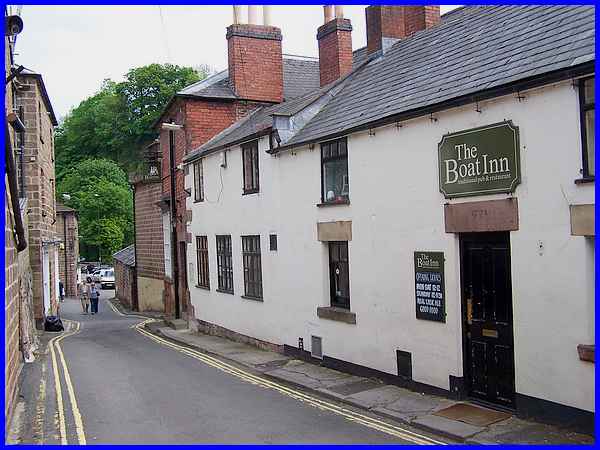
After The Promenade, Scarthin continues past The Boat Inn where
the date of 1772 is inscribed in the lintel above the door.
|
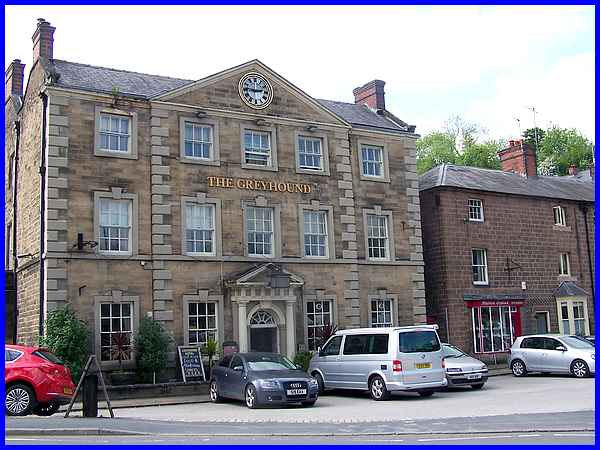
A right turn at the end of Scarthin took us in front of the Greyhound
Hotel. This was built by Sir Richard Arkwright in 1788 to accommodate
his many visitors and businessmen and it included a bank which
would have facilitated the conducting of their business transactions.
The bank was incorporated into the left hand side of the building
and although now gone, a feature of the building that has survived
the passage of time is the original clock high on the building's
frontage.
|
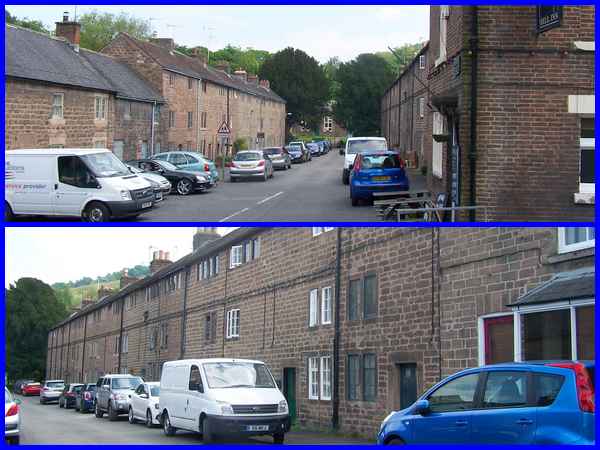
From The Greyhound we ascended The Hill, the main road to Wirksworth,
for a little way as far as North Street. This was to view the
gritstone cottages again built by Arkwright in the eighteenth
century around 1776/7 to house his workers. Originally the attic
rooms in the three storied cottages were framework knitting rooms
where the residents could make stockings.
|
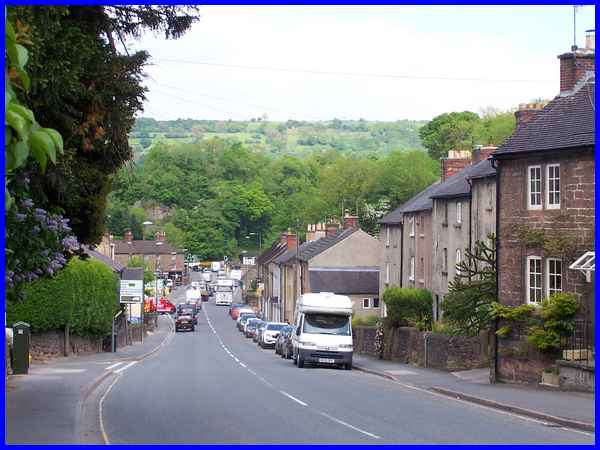
Turning back down The Hill, we made our way to the car to continue
our drive through Matlock Bath and Matlock but not before noticing
more heavy vehicles turning into Water Lane and Via Gellia. At
the foot of the hill is the tree covered Scarthin Rock and more
of the unspoiled Derbyshire countryside beyond. This short walk
around the village however has only scraped the surface of the
historic and industrial heritage of the area and even in the
village itself there is much more for the interested still to
be discovered.
|

